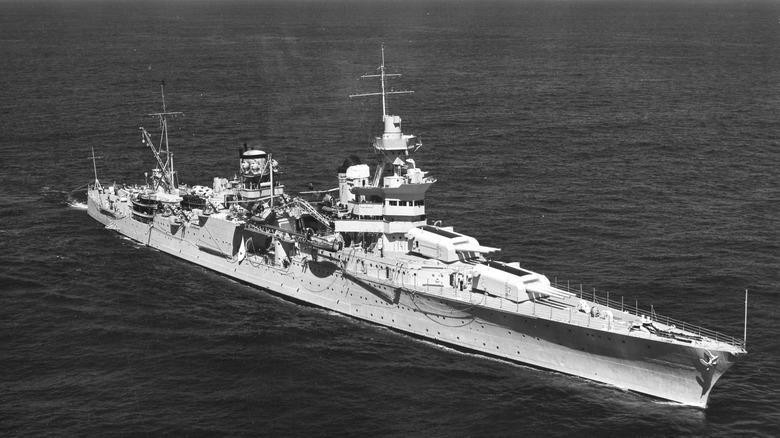The high seas during World War II were treacherous battlegrounds where nations clashed in a struggle for dominance. These vast, uncharted waters became the stage for intense naval warfare, with fleets of all sizes and types patrolling relentlessly to achieve strategic objectives. Among these vessels, cruisers held a unique and crucial position, serving as a bridge between the heavily armed battleships and aircraft carriers and the smaller, more agile destroyers.
Despite being often overshadowed by more famous warships, cruisers proved to be indispensable during the global conflict. Their versatility allowed them to perform a wide range of tasks within a naval battle group. One of their primary roles was escorting aircraft carriers, which required a balance of speed and firepower. While battleships were powerful, their size made it difficult for them to keep pace with the faster carriers. Destroyers, though quicker, lacked the durability and offensive capability of cruisers, making them less suitable for extended engagements.
Cruisers also played a vital role in reconnaissance missions, scouting ahead of the main fleet to detect potential threats and identify enemy positions. Equipped with a variety of weapons, including guns of different calibers, they could engage other ships and aircraft. Some even participated in shore bombardments, delivering devastating attacks on enemy coastal defenses. For example, the Baltimore-class heavy cruisers were fitted with up to 40 main guns, while some Japanese light cruisers, like the Kuma-class, were modified to carry torpedo tubes for anti-submarine operations.
Several notable cruisers emerged during the war, each playing a significant role in key events. The British cruisers HMS Norfolk and HMS Dorsetshire were part of the fleet that ultimately sank the German battleship Bismarck, one of the largest and most feared warships of the conflict. This victory was a major morale boost for the British Navy. Meanwhile, the German cruiser Königsberg supported the invasion of Norway but was later crippled and sunk by British aircraft, marking the first naval vessel ever destroyed by an air attack in wartime.
Another German cruiser, Prinz Eugen, was part of the Bismarck’s battlegroup when it sank the Royal Navy’s HMS Hood. Afterward, it survived a British attack and became the largest German warship surrendered to the Allies at the end of the war. On the American side, the Alaska-class cruisers were among the largest ever built, with a displacement of 29,771 tons and a length of 246 meters. Fitted with nine 12-inch main guns, these vessels were initially designed in response to rumors of Japanese super-cruisers. Though the threat never materialized, two Alaska-class cruisers, the USS Alaska and USS Guam, saw active service before the war ended.
Following World War II, the role of cruisers began to evolve rapidly. As advancements in aviation and missile technology changed the nature of naval warfare, traditional gun-armed cruisers became increasingly vulnerable. In response, the U.S. converted some of its Baltimore-class cruisers into Boston-class guided missile cruisers, marking the beginning of a new era in naval design. These conversions involved removing gun turrets and replacing them with advanced missile systems, such as the Terrier anti-aircraft launchers.
Today, cruisers have transformed into highly sophisticated multi-mission platforms. They no longer rely solely on guns but are equipped with advanced missile systems, radar, and sensor technology, allowing them to perform a wide range of tasks, from anti-air and anti-submarine operations to land-attack missions. Some modern cruisers, like the Ticonderoga-class ships, are fitted with the Aegis ballistic missile defense system and can launch Tomahawk cruise missiles for long-range strikes. Their roles have also expanded to include command-and-control functions, enabling them to serve as flagships in complex naval operations.
As naval technology continues to advance, cruisers remain a critical component of modern maritime forces, adapting to new challenges while maintaining their legacy as powerful and versatile warships.







